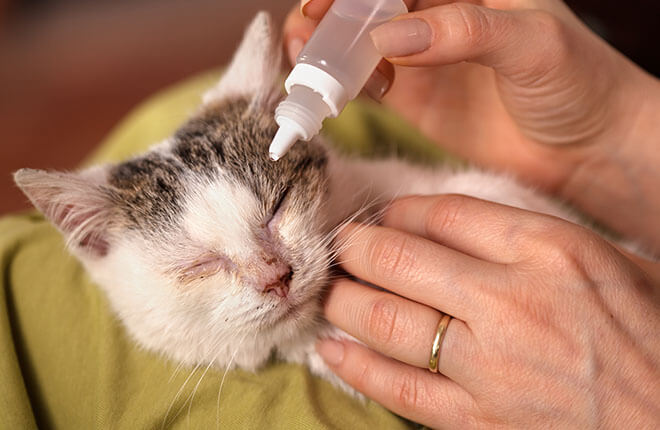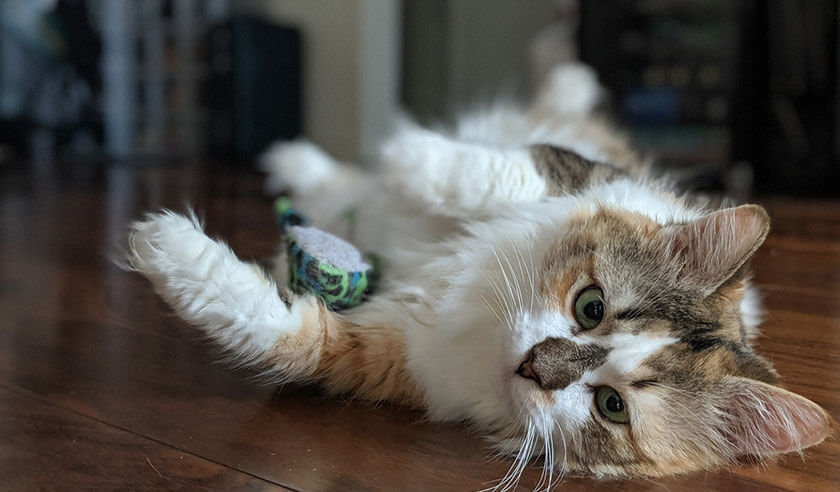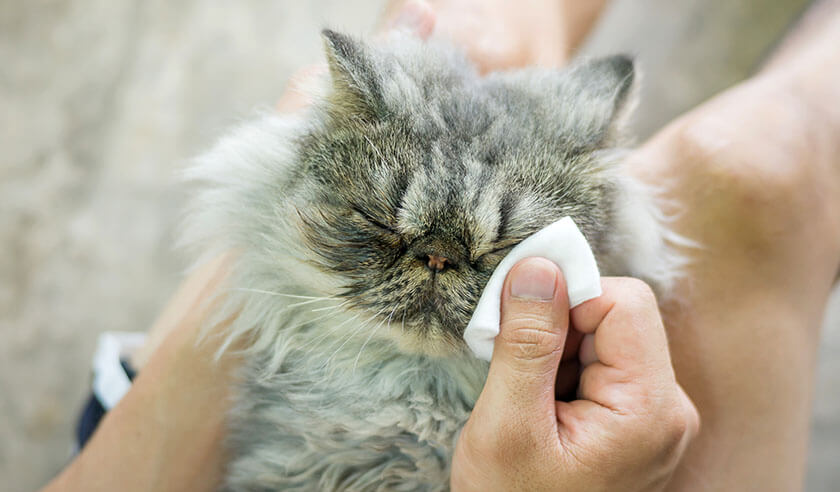Almost all cats, at some point in life, will experience an episode of conjunctivitis (sometimes called pink eye). If your cat is having eye issues, it can be an uncomfortable and miserable feeling, but there’s plenty you and your veterinarian can do to treat conjunctivitis and have your cat feeling better in no time.
What is Conjunctivitis in Cats?
The inner surfaces of a cat’s eyelids are lined with a thin mucous membrane (conjunctiva). The conjunctiva also coats the outer surface of the eyeball. When it’s healthy, it’s slippery, smooth, and soft pink in color. The purpose of this membrane is to provide lubrication for the eyeball by functioning as a passageway for tears that make contact with the surface. The tears are distributed as the cat blinks. The conjunctiva also helps prevent eye infections by holding antibodies within its lining. When this tissue becomes inflamed, the technical term is conjunctivitis.
Are Some Cats More Likely to Get Conjunctivitis?[1]
While cats of any age can be affected, conjunctivitis is most common in younger cats. This is especially the case for kittens less than a year old. There also seems to be a higher prevalence of conjunctivitis in purebred cats. Additionally, those breeds with flat faces and shortened noses, such as Persians and Himalayans, seem more susceptible to conjunctivitis. This condition is also relatively common in cats who are immunocompromised, including those with feline immunodeficiency virus (FIV) or feline leukemia virus (FeLV).
What Causes Cat Conjunctivitis?
Feline conjunctivitis is typically infectious and is more often caused by viral infections than bacterial infections. The most common causes are:
- Feline herpesvirus — type 1. This is a virus which is a major cause of upper respiratory infections (nose, sinuses, and/or throat) in cats. This infection is often called feline viral rhinotracheitis.
- Feline calicivirus. This is a virus that causes both upper respiratory and oral infections in cats.
- Chlamydia. This is a bacterial organism that causes conjunctivitis and upper respiratory issues and can affect the lungs if not treated.
- Mycoplasma. This is a bacterial organism that commonly causes upper respiratory infections and conjunctivitis in cats.
There is also allergic conjunctivitis. This is caused by environmental irritants/allergens such as dust, airborne chemicals, and certain plants.
What Are the Symptoms of Cat Conjunctivitis?
The cat’s inflammatory immune response to the virus or bacteria is:
Clinical cat conjunctivitis symptoms can be present in one or both eyes. Often, the third eyelid (the membrane located in the inner corner of your cat’s eye) is also affected. It can become red and swollen.
Cats experiencing these symptoms may scratch and rub the eye to the point of inflicting trauma. This can cause additional issues like hemorrhage, systemic inflammation, and inflammation of the blood vessels, making prompt treatment of conjunctivitis even more important.
- Redness
- Swelling
- Discharge (which can be clear and watery or dark-colored, green, or yellow, and thick)
- Squinting
- Frequent blinking
How to Treat Cat Conjunctivitis
There are instances, especially if the conjunctivitis is mild, where it will resolve without medications, but this isn’t the time for “wait and see.” You should consult your veterinarian right away if you notice your cat is experiencing any signs of eye discomfort and/or discharge. This way, you can quickly rule out other eye issues and focus on the appropriate treatment right away.

A commonly prescribed cat conjunctivitis treatment is topical antibiotic eye drops or eye ointment. The drops or ointment are usually applied two to four times per day for a period of two to three weeks. Be sure to follow your veterinarian’s specific instructions for your cat. In instances where clinical signs recur when topical therapy is used alone, veterinarians may need to prescribe oral antibiotics.
When you’re dealing with viral conjunctivitis, the virus can never be fully eradicated. This means cats may have flare-ups during times of stress and when other illnesses or medical issues affect their immune system. For cases where these flare-ups are common, there are additional treatment options that may be recommended. In addition to topical antibiotic eye medications, topical or oral antiviral drugs may be prescribed to help manage the conjunctivitis recurrence. Antivirals go a step beyond antibiotics. Antibiotics target the bacterial infection that is secondary to the viral infection. Antiviral agents directly target the viral causes of disease by helping to stop its replication and therefore spread within the body.
Delaying veterinary care when your cat is suffering from conjunctivitis can lead to potentially serious eye trauma. The earlier you have your cat evaluated, the better the chance of resolving the issue quickly, lessening your cat’s discomfort, and possibly saving you stress, time, and money. Check with your veterinarian right away if you see any signs, symptoms, or changes in your cat’s eyes.
ZPC-01561R1
- Conjunctivitis. Cornell Feline Health Center. Accessed September 28, 2021. https://www.vet.cornell.edu/departments-centers-and-institutes/cornell-feline-health-center/health-information/feline-health-topics/conjunctivitis





